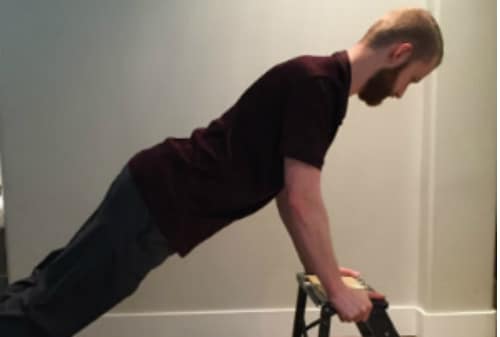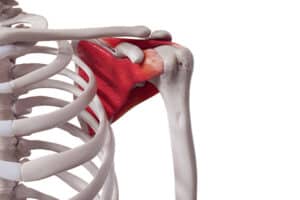What is Progressive Overload?
Progressive overload is the gradual increase in stress placed upon the body in the context of fitness training and physical rehabilitation. As the demands on the body are continuously advanced, it will adapt, quite specifically, to handle the increased load by becoming faster, stronger, more efficient, and so on.
Why is Progressive Overload Important?
The concept of progressive overload is important in avoiding a “plateau” in physical adaptations. A plateau occurs when the exercise stresses being placed on the body are not increased after several training sessions, and so the body no longer needs to adapt.
For example, if you were to perform ten repetitions (reps) of push-ups a day for three days per week, eventually they would become so easy that the muscles involved in the movement would stop increasing in size, strength and coordination, as they simply would not need to. In other words, the demand for adaptation is no longer present from the current stimulus, and so although your body will maintain the current level of fitness required for the exercise, it will not increase in strength, size, power, or endurance.
For those who are happy with their current level of fitness, progressive overload is less important. For everyone else, especially those who are undergoing active rehabilitation, it is a crucial component in reaching your goals.
How is Progressive Overload Applied?
To progressively overload an exercise, it needs to place a greater demand on the body in some way. The following is a list of many different methods that can be used to achieve this:
- Increase the number of sets
- Decrease the rest duration between sets
- Increase the amount of resistance
- Eg. performing a bicep curl with 20lbs is more demanding than curling 15lbs
- Biases increased muscular strength (the maximum force your muscles can produce) over other muscular adaptations
- Increase the duration (if one is present)
- Eg. performing a plank for 60 seconds is more demanding than planking for 30 seconds
- Eg. running for 30 minutes is more demanding than running for 20 minutes
- Biases increased muscular endurance (the ability of your muscles to resist fatigue) over other muscular adaptations
- Increase the speed at which you complete the exercise
- Eg. if you perform 10 repetitions of a squat in 15 seconds, it will be more demanding than if you completed the 10 repetitions in 30 seconds
- Biases increased muscular power (the ability of your muscles to exert maximal force in the shortest possible amount of time) over other muscular adaptations
- Advance the exercise to a more difficult variation, using one of more of the following:
- Add a dynamic component
- Combine with another exercise
- Reduce the size of the base of support
- Reduce the stability of the base of support
- Increase the range of motion/change the angle of the body parts involved
- Increase the frequency of training
- Increase the number of exercises per training session
Depending on your fitness goals, you may also want to adjust the number of repetitions you are performing each set. Research on the optimal number of reps for a given muscular adaptation often varies. However, suggestions tend to fluctuate closely around the following ranges:
- ≤ 6 reps biases muscular strength
- 6-12 reps biases muscular hypertrophy (the size of your muscles)
- >12 reps biases muscular endurance
This is not an exhaustive list of ways that you can progressively overload your workouts. However, it includes some important concepts that you should familiarize yourself with if you are to achieve the results you want, in terms of fitness training and physical rehabilitation.
Am I Exercising at the Correct Intensity?
Too Easy?
Once an exercise is no longer providing a physical challenge to your body, it is probably time to progress it. However, this progression should be gradual and consistent – focus on improving by small amounts at a time and choose progressions that make sense. It would be unwise sense to suddenly jump to hammer curling 40lb dumbbells once 15lb dumbbells have become too easy; advance in smaller increments, such as increasing from 15lbs to 20lbs, or increasing the number of sets from 2 to 3.
Too Hard?
Inability to maintain proper form can be a key indicator that you have chosen an exercise or progression that is too intense, and you should take a step back. Learning and maintaining ideal form is one of the most important concepts of exercising. It doesn’t matter if you are lifting weights at the gym for fitness, aesthetics, or physical rehabilitation, or if you are playing tennis, or even going for a jog outside – the importance of excellent form holds true in all these situations. So, if you find your body perturbating uncontrollably while trying to perform a core exercise, or you are activating additional muscle groups to compensate for a level of intensity that is far too high for you to perform correctly, it is time to tone it down a notch.
Pain is another indicator that you have attempted an exercise or progression that is not at your current level. This is especially important when undergoing active rehabilitation as it interferes with your ability to exercise effectively, in turn delaying progress in the program. Additionally, it can cause further aggravation to the injuries that you are attempting to recover from, leaving you feeling worse off than if you hadn’t chosen to exercise at all.
Examples of Progressive Overload
Level 1 – Wall push-up
Progression: N/A
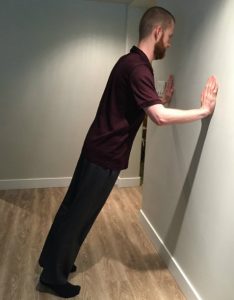
Level 2 – Incline push-up
Progression: Changed angle
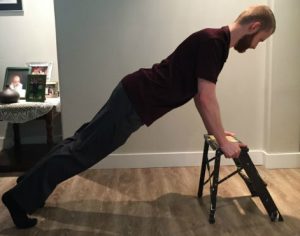
Level 3 – Traditional push-up
Progression: Changed angle
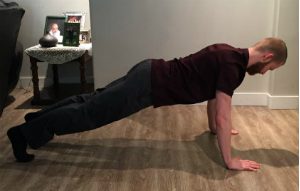
Level 4 – Elevated push-up
Progression: Changed angle

Level 5A – Elevated push-up with leg lift
Progression: Decreased size of base of support
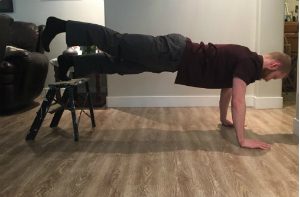
Level 5B – Elevated push-up with unstable support
Progression: Decreased stability in base of support
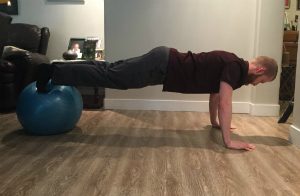
Other ways to progressively overload these six exercises:
- Increase number of reps
- Increase number of sets
- Increase speed of each rep
- Decrease rest duration between sets
- Increase the range of motion/add a dynamic component (eg. “T push-up”)
- Combine with another exercise (eg. add a jump squat to make it a “burpee”)

